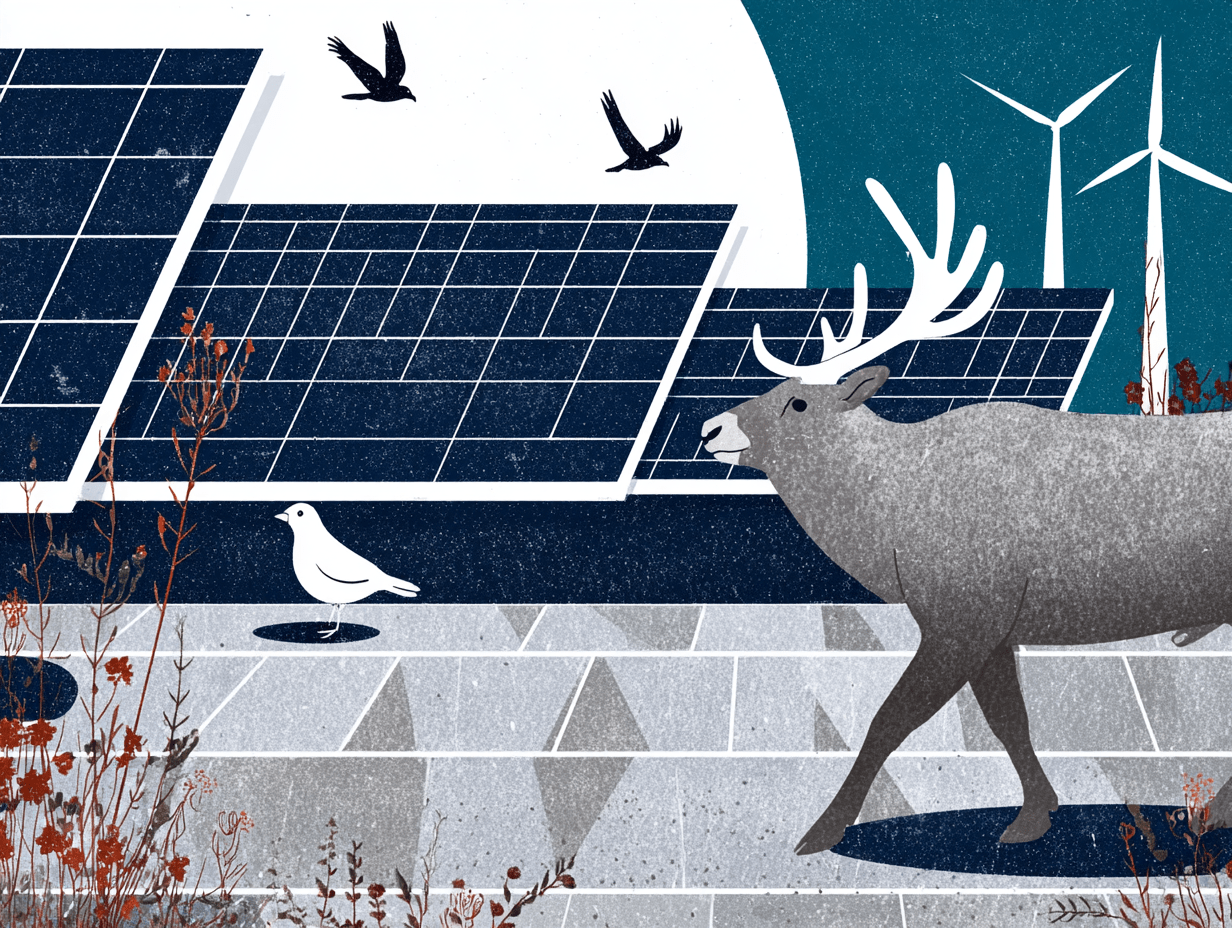Planning Climate and Biodiversity Policies in an Integrated Manner – Is the UK Showing the Way?
Scientific evidence shows that climate change is already the third-largest driver of biodiversity loss globally, a threat that will intensify if climate change worsens. Conversely, biodiversity loss worsens climate change. A commentary by J. Christopher Proctor, and Romain Svartzman

There is a significant disconnect between the biodiversity and climate policy agendas. For instance, the UN Conferences of the Parties (COP) on Climate and on Biodiversity are held separately, and countries that have ratified the related UN conventions must report their strategies and progress through completely different procedures. This separation also exists at the national level.
A clear example is France, which has one distinct national strategy for its low-carbon transition and a completely separate document for its biodiversity goals. The separation is reflected in academic research as well, where models and frameworks designed to address climate change must now be adapted to account for biodiversity and nature.
There is not a clear consensus on why, exactly, these two challenges have been so thoroughly separated. Perhaps it is a simple case of chronology, with alarm bells on climate sounding earlier, and biodiversity gaining international attention only more recently.
More philosophically, the divide may stem from the epistemology of Western science itself, which tends to treat problems by dividing them down, separating, nature from society, biology from physics, biodiversity loss from climate change.
Whatever its origins, the disconnect between the climate and biodiversity agendas poses a significant threat to the resilience of our socioeconomic systems.
Scientific evidence shows that climate change is already the third-largest driver of biodiversity loss globally (after over-exploitation and land use change), a threat that will intensify if climate change worsens. Conversely, biodiversity loss worsens climate change.
For instance, continued deforestation of the Amazon could lead to a tipping point that would make it shift to a savanna vegetation, with catastrophic consequences not only for biodiversity but also for climate change, given the critical role this ecosystem plays in storing CO2 emissions.
From a policy perspective, the interdependence of these two issues creates potential for both synergies and trade-offs. Protecting and restoring ecosystems, such as forests and mangroves, can simultaneously mitigate climate change by sequestering carbon. However, poorly planned climate actions can harm biodiversity.
For example, large-scale monoculture reforestation projects, while intended to absorb carbon, can damage ecosystems and deplete freshwater resources.
It is therefore promising to see that policymakers are increasingly calling for a holistic approach that integrates climate and biodiversity goals.
For instance, the Intergovernmental Panel on Climate Change (IPCC) and the Intergovernmental Science-Policy Platform on Biodiversity and Ecosystem Services (IPBES) have concluded in a collaborative report published in 2021 that attempting to tackle one crisis without considering the other could lead to failures on both fronts.
On a different front, the European Central Bank (ECB) recently updated its former climate agenda to include both climate change and nature loss.
This update acknowledges that these crises can compound one another and pose severe risks for price and financial stability, which stand at the core of the ECB's mandate.
However, moving from the observation that climate and biodiversity should be addressed jointly to practical implementation – that is, from what we should do to how we do it – remains a central challenge.
Against this backdrop, it is particularly welcome – especially given the current context of environmental backlash – that the UK government published a report in July 2025 setting out a strategy to jointly address climate change and biodiversity loss in England.
The report provides concrete examples of this integrated approach. For instance, small solar farms must already demonstrate a net biodiversity gain of 10%, and the government is exploring similar requirements for larger projects.
Likewise, the development of offshore wind, a key pillar of the UK’s energy strategy, will be accompanied by a plan to compensate for unavoidable impacts on Marine Protected Areas.
The government is also developing an agricultural strategy for England that aims to support nature-friendly farming practices – supported by a new £7 billion fund for nature recovery – while also reducing the emissions of methane, a potent greenhouse gas.
While the UK government's ambition is commendable, the report reveals several limitations. First, the level of institutional innovation and political ambition often appears lower than suggested.
For example, the report highlights the requirement for large-scale solar farms to complete Environmental Impact Assessments (EIAs) as part of an integrated approach. However, EIAs are a standard procedure in any country with relatively developed environmental regulations.
More fundamentally, the report – and by extension, England's environmental strategy – appears to deliberately avoid topics where trade-offs between climate, biodiversity and socioeconomic goals arise. For example, its section on “restoring our seas” does not mention deep-sea mining, despite its potential for severe harm to marine ecosystems and the global call for a moratorium.
While one could argue this is because the report focuses on England and deep-sea mining occurs in international waters, another explanation exists: the UK government has been accused of sponsoring two deep-sea mining exploration licenses, which contradicts its public support for an international moratorium. Similarly, the sections on agriculture avoid the terms “pesticides”, “meat” or “diet.”
This is a significant omission, given the scientific consensus that pesticide use is a primary driver of biodiversity loss, and that reducing meat consumption in our diets is a key part of any climate- and biodiversity-conscious strategy.
Another shortcoming is the upcoming “Land Use Framework for England,” which aims to enable 1.5 million new homes while reconciling climate, nature, and social goals.
This strategy seems to ignore the literature showing that sustainable housing cannot rely solely on “supply-side sustainability”, i.e. on building always more while aiming to be environmentally-friendly.
It must also consider measures like reducing the rate of housing expansion.
While such measures would face significant political and economic barriers – such as opposition from homeowners or impacts on the jobs created by the construction sector – they are essential to meet housing needs without compromising national sustainability objectives.
While the UK's integrated climate and biodiversity strategy sets a valuable example for EU countries, it fails to adequately address the critical trade-offs involved in balancing these goals while guaranteeing socio-economic progress.
Indeed, the existence of these unavoidable trade-offs may offer another explanation for why research and policy treat the challenges separately in the first place.
Going forward, it is critical to ensure that integrated approaches do not become a rhetorical strategy for sidestepping difficult political economy issues.
IEP@BU does not express opinions of its own. The opinions expressed in this publication are those of the authors. Any errors or omissions are the responsibility of the authors.

